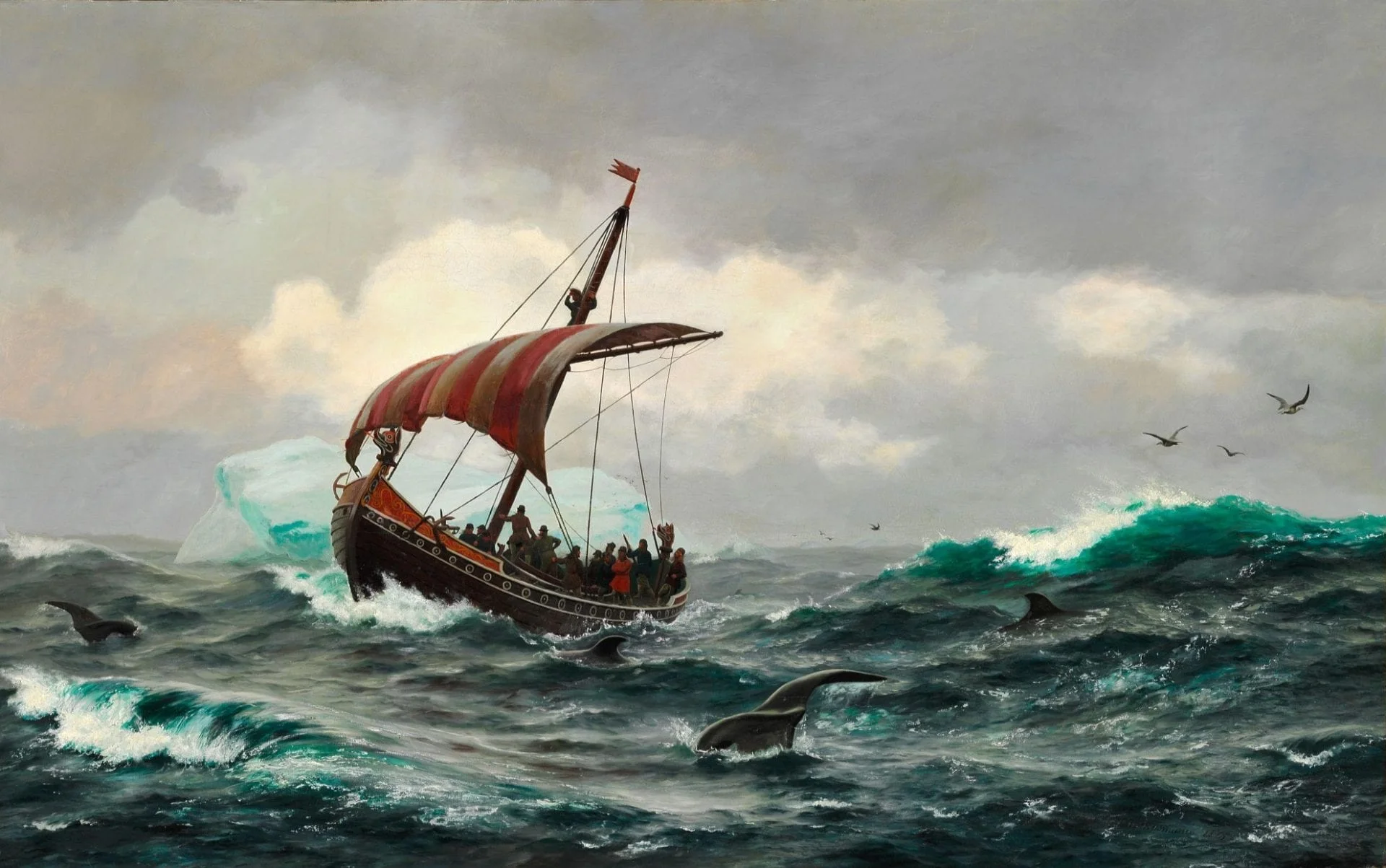Greenland, or Grœnland in Old Norse, was settled by Norwegian and Icelandic explorers during the 10th century AD, where two major Viking settlements emerged until their abandonment in the 15th century AD.
According to a medieval text called the Landnámabók, translated as “Book of Settlements”, Greenland was supposedly first sighted by Gunnbjörn Ulfsson, also known as also known as Gunnbjörn Ulf-Krakuson during the early 10th century AD when his ship was blown off course.
In AD 978, Snæbjörn galti Hólmsteinsson is said to have set sail for Greenland with about two dozen companions, and settled on the islands of Gunnbjarnar Skerries, a small group of islands lying off the coast of Greenland, that according to Johannes Ruysch’s map from AD 1507 had “completely burned up” (possibly by volcanic activity). After spending a terrible winter on the islands, the settlers murdered Snæbjörn and his foster father, and abandoned the settlement to return to Iceland.
The first successful settlement of Greenland was by Erik Thorvaldsson, otherwise known as Erik the Red. According to the sagas, the Icelanders had exiled Erik during an assembly of the Althing for three years, as punishment for Erik killing Eyiolf the Foul over a dispute.
Erik went in search of land that had been reported to lie to the north and reached the coastline of Greenland where he spent the three years of his exile exploring the new land.
Upon returning to Iceland, he is said to have brought with him stories of “Greenland”, an auspiciously named land in order to sound more appealing than “Iceland” to lure potential settlers.
Erik returned to Greenland in AD 985 or 986 with a large number of colonists, who established two colonies on the southwest coast: The Eastern Settlement or Eystribyggð, in what is now Qaqortoq, and the Western Settlement or Vestribygð, close to present-day Nuuk. A later Middle Settlement emerged in what is now Ivittuut, but this is generally considered to be associated with an expansion from the Eastern Settlement.

Erik built his personal estate of Brattahlíð, near present-day Narsarsuaq where he ruled as paramount chieftain of Greenland until his death. According to legend, Erik had planned to journey with his son Leif Erikson (who is believed to have established a Norse settlement at Vinland), but Erik fell off his horse on his way to the ship. He later died from a pandemic that killed many of the island’s colonists in the winter after his son’s departure.
At their peak, the settlements are estimated to have had a combined population of between 2,000-10,000 inhabitants (sources differ), with archaeologists identifying the ruins of approximately 620 farmsteads spread across Greenland’s south-western fjords.
The settlers shared the island with the late Dorset culture, who lived in the northern and western parts of Greenland, and later with the Thule culture (who the Norsemen called the Skræling) that entered from the north around AD 1300 after migrating from Alaska.
In AD 1126, the Roman Catholic Church founded a diocese at Garðar in the Eastern Settlement at present-day Igaliku, which was subject to the Norwegian archdiocese of Nidaros and constructed several churches. By AD 1261, the Greenlanders had accepted rule by the King of Norway, which then entered into a union with the Kingdom of Denmark in AD 1380.
The settlements continued to prosper until the 14th century AD, where they entered a period of decline until their abandonment in the 15th century AD. Various theories have been proposed to explain the abandonment, with the most prominent being gradual climate change, loss of contact and support from Denmark, opportunities for migration back to Europe after the plague had left farmsteads abandoned, economic factors, or conflicts with the Inuit peoples.
The last written record from the Viking Greenlanders dates from AD 1408, which documents a marriage between Thorstein Olafsson and Sigrid Björnsdóttirin.
Header Image Credit : Carl Rasmussen – Public Domain





